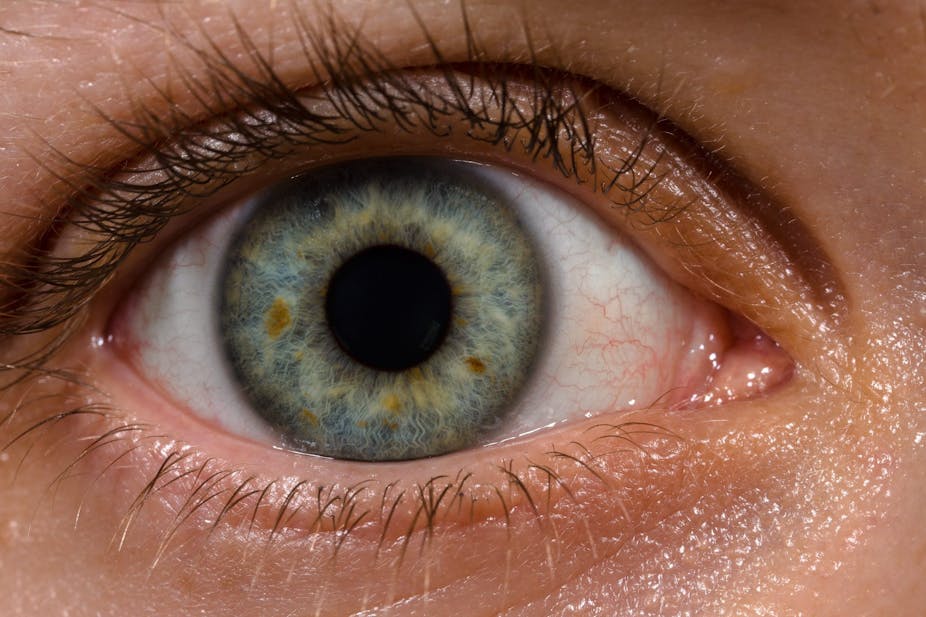Our eyes are continuously bombarded by an enormous amount of visual information – millions of shapes, colours and ever-changing motion all around us. For the brain, this is no easy feat. On the one hand, the visual world alters continuously because of changes in light, viewpoint and other factors. On the other, our visual input constantly changes due to blinking and the fact that our eyes, head and body are frequently in motion.
To get an idea of the “noisiness” of this visual input, place a phone in front of your eyes and record a live video while you are walking around and looking at different things. The jittery, messy result is exactly what your brain deals with in every moment of your visual experience. This can be seen also in the video below. The white circle on the right shows potential eye movements, and the blurry blob on the left reveals the jumpy visual input in every moment.
Yet, seeing never feels like work for us. Rather than perceiving the fluctuations and visual noise that a video might record, we perceive a consistently stable environment. So how does our brain create this illusion of stability? This process has fascinated scientists for centuries and it is one of the fundamental questions in vision science.
The time machine brain
In our latest research, we discovered a new mechanism that, among others, can explain this illusory stability. The brain automatically smoothes our visual input over time. Instead of analysing every single visual snapshot, we perceive in a given moment an average of what we saw in the past 15 seconds. So, by pulling together objects to appear more similar to each other, our brain tricks us into perceiving a stable environment. Living “in the past” can explain why we do not notice subtle changes that occur over time.
In other words, the brain is like a time machine which keeps sending us back in time. It’s like an app that consolidates our visual input every 15 seconds into one impression so that we can handle everyday life. If our brains were always updating in real time, the world would feel like a chaotic place with constant fluctuations in light, shadow and movement. We would feel like we were hallucinating all the time.
We created an illusion to illustrate how this stabilisation mechanism works. Looking at the video below, the face on the left side slowly ages for 30 seconds, and yet, it is very difficult to notice the full extent of the change in age. In fact, observers perceive the face as ageing more slowly than it actually is.
To test this illusion we recruited hundreds of participants and asked them to view close-ups of faces morphing chronologically in age in 30-second timelapse videos. When asked to tell the age of the face at the very end of the video, the participants almost consistently reported the age of the face that was presented 15 seconds before.
As we watch the video, we are continuously biased towards the past and so the brain constantly sends us back to the previous ten to 15 seconds (where the face was younger). Instead of seeing the latest image in real time, humans actually see earlier versions because our brain’s refresh time is about 15 seconds. So this illusion demonstrates that visual smoothing over time can help stabilise perception.
Read more on theconversation.com

No comments:
Post a Comment